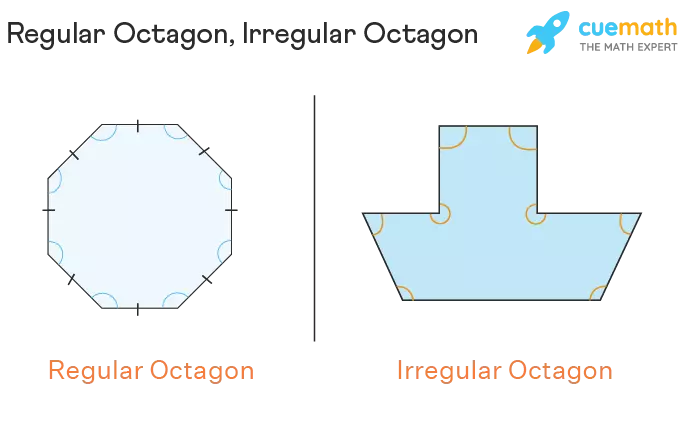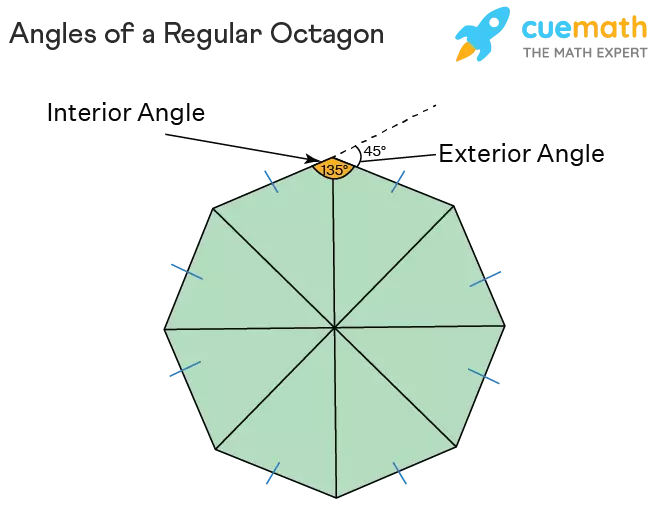Octagons are more than just eight-sided shapes. They possess a unique charm that sets them apart from other geometric figures. In this article, we will delve into the intricacies of octagons, exploring their various types and properties. So, let's embark on a journey to discover the wonders of octagons!
What Defines an Octagon?
An octagon is a polygon characterized by its eight sides, eight interior angles, and eight vertices. However, when all the sides and angles of an octagon are equal, we refer to it as a regular octagon. On the other hand, an irregular octagon has sides and angles that differ in measurement. Let's take a closer look at these classifications.
Regular Octagons

A regular octagon boasts equal sides and angles. Each interior angle of a regular octagon measures 135°, and the sum of its interior angles is 1080°. This symmetrical marvel is a true embodiment of perfection.
Irregular Octagons
Unlike their regular counterparts, irregular octagons exhibit various side lengths and angle measurements. Despite their lack of uniformity, the sum of the interior angles of an irregular octagon always remains 1080°.
Convex and Concave Octagons
Octagons can also be classified based on their shape. Convex octagons bulge outwards, with no interior angle exceeding 180°. Concave octagons, on the other hand, have at least one angle pointing inwards, resulting in indentations.

Unveiling the Properties of Octagons
Octagons possess several intriguing properties that make them easily recognizable. Here are some key characteristics:
- An octagon consists of eight sides and eight angles.
- The sum of all interior angles in an octagon is always 1080°.
- A regular octagon forms six triangles when diagonals are drawn from a common vertex.
- Octagons possess a total of 20 diagonals.
Exploring Octagon Diagonals
The diagonal of an octagon connects two non-adjacent vertices. In an octagon, there are precisely 20 diagonals. To determine the number of diagonals in any polygon, we use the formula: Number of diagonals = n(n-3)/2, where 'n' represents the number of sides. For an octagon, the formula yields 20 diagonals.
Unraveling Octagon Angles
An octagon boasts eight interior angles and eight exterior angles. In a regular octagon, each interior angle measures 135°. The total sum of interior angles amounts to 1080°, while the sum of exterior angles remains at 360°.
To calculate the sum of interior angles in any polygon, the formula (n - 2) × 180° can be used, where 'n' represents the number of sides. For an octagon, this formula reveals the sum of interior angles as 1080°.
The Mysteries of Octagon Area
The area of an octagon refers to the space it occupies. For a regular octagon, the area can be calculated using the formula: Area = 2a²(1 + √2), where 'a' represents the length of any side. Irregular octagons require a different approach, where the figure is divided into smaller shapes such as triangles.
Perimeter, the Boundary of an Octagon
The perimeter of an octagon corresponds to the total length of its sides. In the case of a regular octagon, where all sides are equal, the perimeter is calculated by summing up the lengths of all the sides.
Now that you understand the basics of octagons, you can identify their different types, discern their unique properties, and appreciate their inherent beauty. Remember, octagons are not just mathematical entities; they hold a special place in the realm of geometry.
☛ Related Articles
- Types of Polygons
- Pentagon
- Hexagon
- Heptagon
- Decagon
- Dodecagon
- 3D shapes









